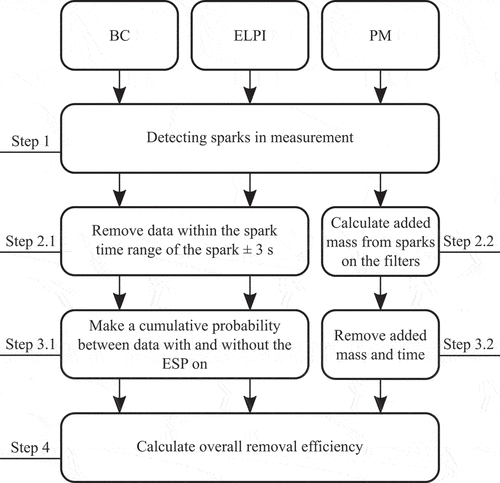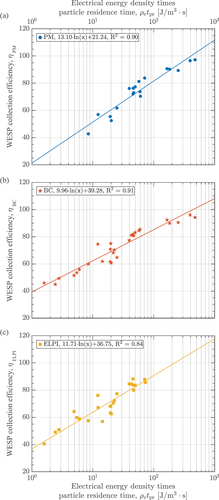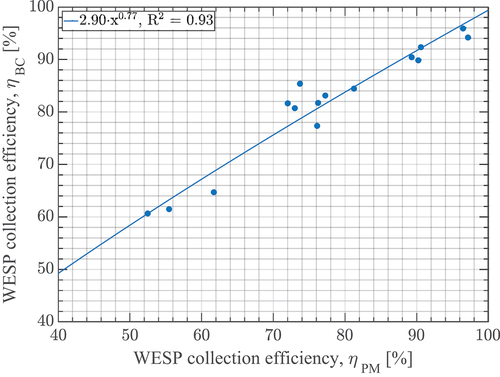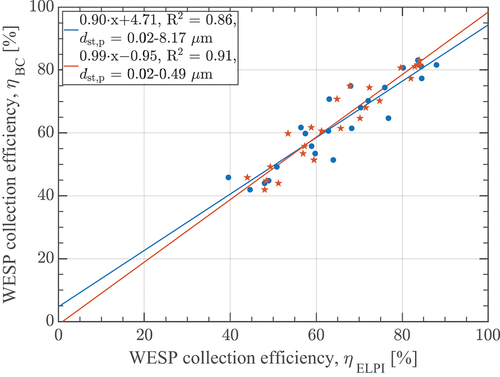Figures & data
Figure 1. Schematic of the experimental setup. Three measurement points are marked with red spots and three gas measurement points are marked with black spots. During the experiments the temperature, T, pressure, P, and gas flow volume, F, were measured.
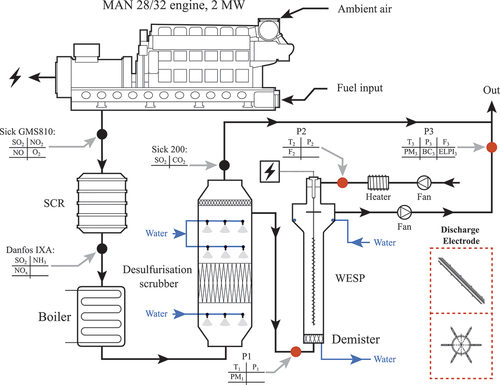
Table 1. Stokes particle diameter intervals and geometric mean Stokes particle diameters.
Figure 3. Illustration of the cumulative probability for ELPI data when the WESP was turned on and off. Five comparison points, marked with a circle and a dashed line, are illustrated where removal efficiency and standard deviation are calculated.
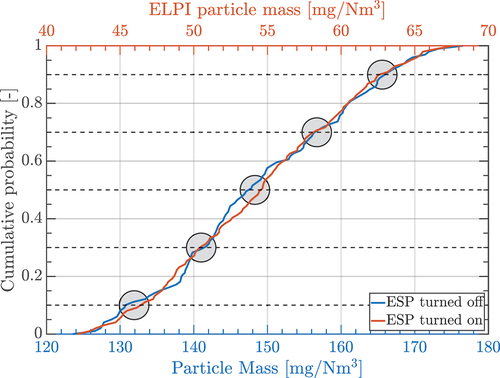
Figure 4. Illustration of normalized current, It/Iref, as a function of time, t, where a spark can be seen in the gray/blue area.
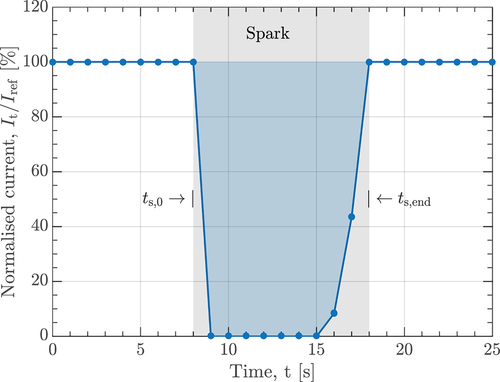
Figure 5. Effect of different discharge electrode lengths as a function of current density, J, and voltage, V.
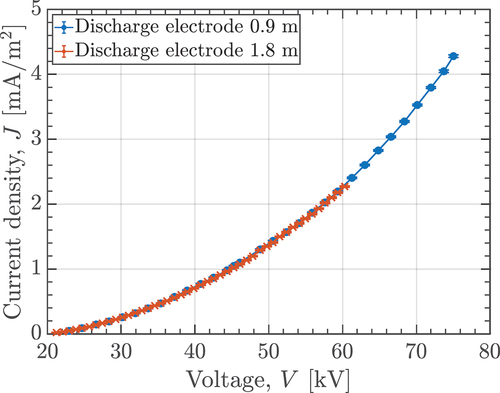
Figure 6. Particle diameter, dst,p, mass distribution of the gas input for the WESP and their standard deviation.
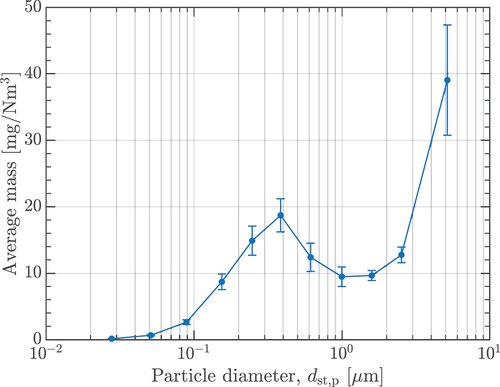
Figure 7. Trapping efficiencies at different particle residence times, tpr, for particle diameters between 0.02–1.30 µm, 1.30–8.17 µm, the overall range 0.02–8.17 µm, with their percentage of the total mass, mt, and depicted with standard deviations.
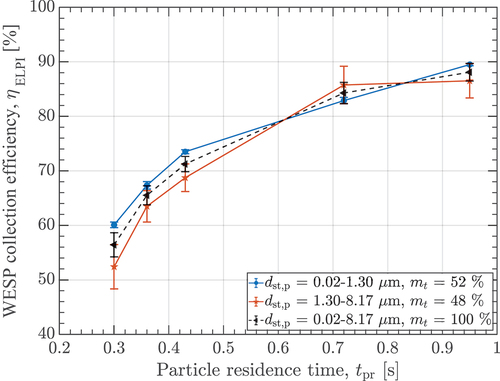
Figure 8. Removal efficiencies for different mean stokes diameters, dst,p at various particle residence times, tpr.
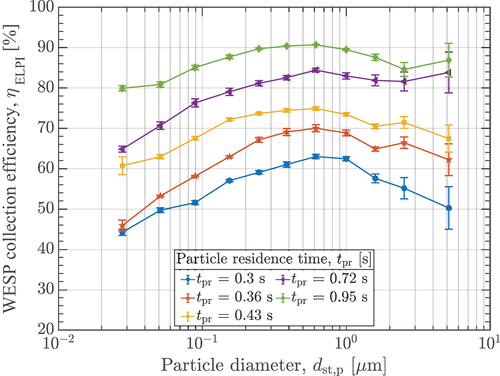
Figure 9. WESP mass trapping efficiency, measured with ELPI, for different electrical energy densities with a constant particle residence time, tpr, of 0.36 s for (a) and 0.72 s for (b).
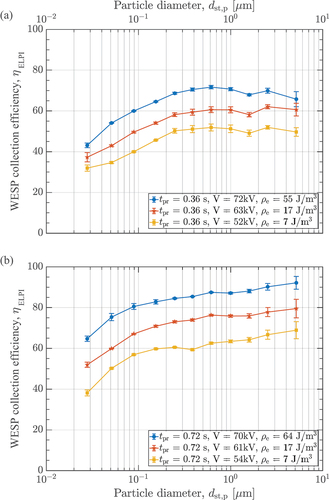
Data availability statement
Raw data were generated at Alfa Lavals test center, Aalborg. Derived data supporting the findings of this study are available from the corresponding author NHH on request.

